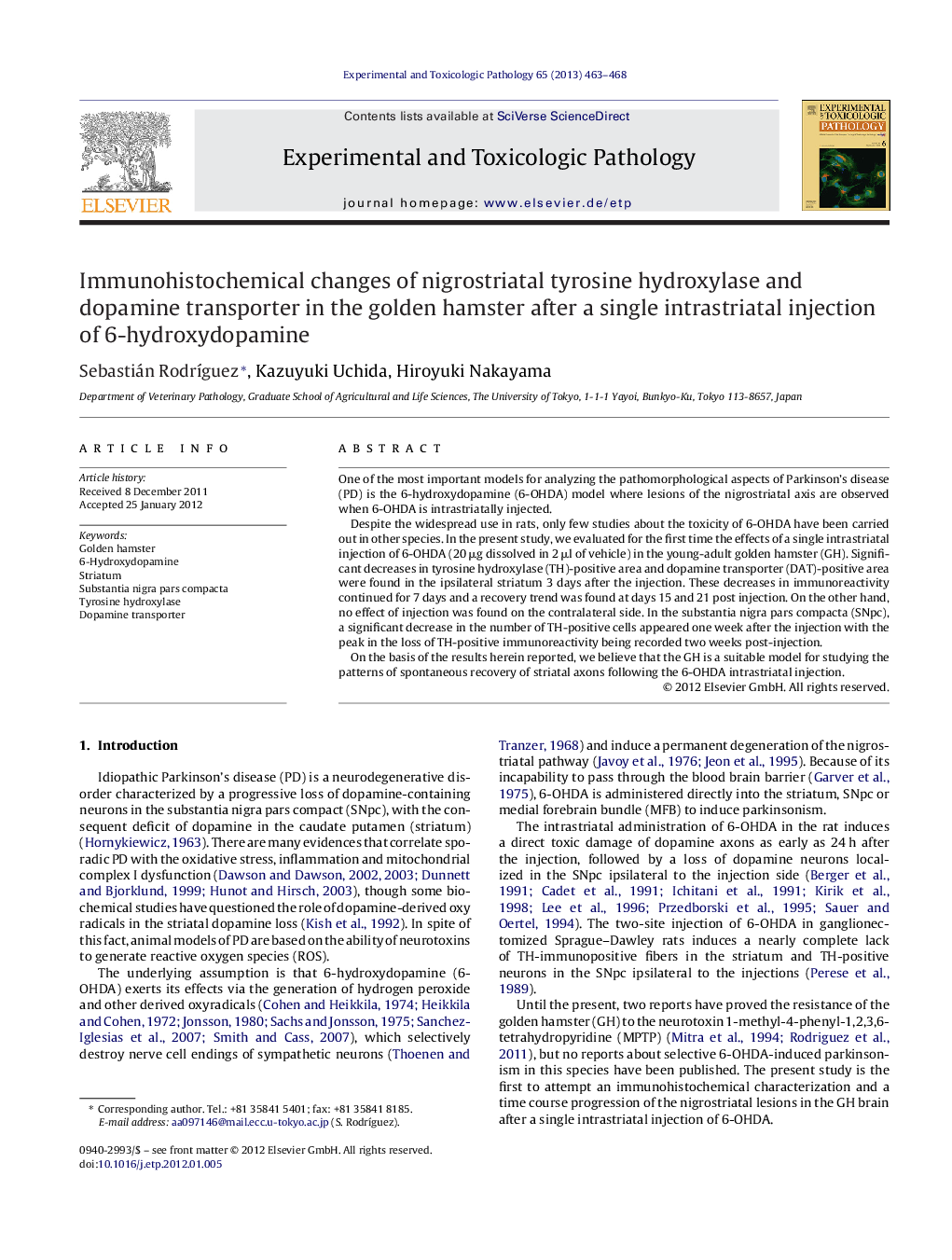| Article ID | Journal | Published Year | Pages | File Type |
|---|---|---|---|---|
| 2499079 | Experimental and Toxicologic Pathology | 2013 | 6 Pages |
One of the most important models for analyzing the pathomorphological aspects of Parkinson's disease (PD) is the 6-hydroxydopamine (6-OHDA) model where lesions of the nigrostriatal axis are observed when 6-OHDA is intrastriatally injected.Despite the widespread use in rats, only few studies about the toxicity of 6-OHDA have been carried out in other species. In the present study, we evaluated for the first time the effects of a single intrastriatal injection of 6-OHDA (20 μg dissolved in 2 μl of vehicle) in the young-adult golden hamster (GH). Significant decreases in tyrosine hydroxylase (TH)-positive area and dopamine transporter (DAT)-positive area were found in the ipsilateral striatum 3 days after the injection. These decreases in immunoreactivity continued for 7 days and a recovery trend was found at days 15 and 21 post injection. On the other hand, no effect of injection was found on the contralateral side. In the substantia nigra pars compacta (SNpc), a significant decrease in the number of TH-positive cells appeared one week after the injection with the peak in the loss of TH-positive immunoreactivity being recorded two weeks post-injection.On the basis of the results herein reported, we believe that the GH is a suitable model for studying the patterns of spontaneous recovery of striatal axons following the 6-OHDA intrastriatal injection.
